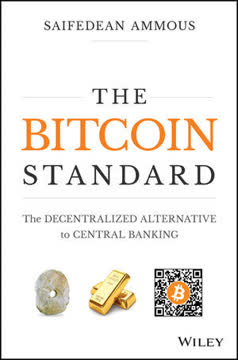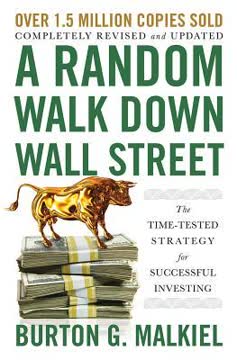Key Takeaways
1. Blockchain technology: A revolutionary digital ledger system
Blockchain technology is 'A collection of technologies, a bit like a bag of Legos'. You can take different bricks out of the bag and put them together in different ways to create different results.
Distributed ledger. Blockchain is a decentralized, transparent, and immutable digital ledger that records transactions across a network of computers. Its key features include:
- Distributed nature: No single entity controls the entire network
- Transparency: All transactions are visible to network participants
- Immutability: Once recorded, transactions cannot be altered
Consensus mechanisms. Blockchains use various methods to validate transactions and maintain network integrity:
- Proof of Work (PoW): Used by Bitcoin, requires solving complex mathematical puzzles
- Proof of Stake (PoS): Validators are chosen based on their cryptocurrency holdings
- Other mechanisms: Delegated Proof of Stake, Proof of Authority, etc.
2. Bitcoin: The first decentralized cryptocurrency
Bitcoin is the very first digital asset of value that can be transferred over the internet without any specific third party having to approve the transaction or being able to deny it.
Decentralized digital currency. Created by the pseudonymous Satoshi Nakamoto in 2009, Bitcoin operates on a peer-to-peer network without central authority. Key aspects include:
- Limited supply: Only 21 million bitcoins will ever be created
- Mining: New bitcoins are generated through a computational process
- Transactions: Recorded on the public Bitcoin blockchain
Bitcoin's impact. As the first successful cryptocurrency, Bitcoin has:
- Sparked a digital currency revolution
- Introduced blockchain technology to the mainstream
- Challenged traditional financial systems and concepts of money
3. Ethereum and smart contracts: Expanding blockchain capabilities
Ethereum's vision is to create an unstoppable, censorship resistant, self-sustaining, decentralised, world computer.
Programmable blockchain. Ethereum extends blockchain technology beyond simple transactions, enabling:
- Smart contracts: Self-executing agreements with terms written in code
- Decentralized applications (DApps): Applications running on a decentralized network
- Ether (ETH): The native cryptocurrency of the Ethereum network
Use cases. Ethereum's programmability has led to diverse applications:
- Decentralized finance (DeFi) protocols
- Non-fungible tokens (NFTs)
- Decentralized autonomous organizations (DAOs)
4. Cryptography: The backbone of blockchain security
Cryptographic hash functions are special and have some characteristics that makes it useful in cryptography and for cryptocurrencies.
Fundamental concepts. Cryptography in blockchain relies on several key principles:
- Public-key cryptography: Uses pairs of public and private keys
- Hash functions: Create fixed-size outputs from any input data
- Digital signatures: Prove ownership and authenticity of transactions
Security implications. These cryptographic elements ensure:
- Transaction integrity
- User anonymity (or pseudonymity)
- Protection against double-spending and other fraudulent activities
5. Initial Coin Offerings (ICOs): A new frontier in fundraising
ICOs are a new method of fundraising that became popular in 2016. Companies offer tokens to people in return for cryptocurrency.
Alternative funding model. ICOs allow startups to raise capital by issuing tokens, offering:
- Direct access to global investors
- Potential for rapid fundraising
- Liquidity for early-stage investments
Regulatory challenges. The ICO boom has led to:
- Increased scrutiny from financial regulators
- Debates over token classification (utility vs. security)
- Efforts to establish best practices and investor protections
6. The evolution of money: From barter to digital currencies
Money is in the eye of the beholder. Nowadays, we have so many different forms of money, all with slightly different characteristics and trade-offs, that Bitcoin and its siblings can, and will, sit alongside the other forms.
Historical perspective. The concept of money has evolved through several stages:
- Barter systems
- Commodity money (e.g., gold, silver)
- Representative money (e.g., gold certificates)
- Fiat currencies (government-issued, not backed by commodities)
- Digital currencies (including cryptocurrencies)
Characteristics of money. Regardless of form, money typically serves as:
- Medium of exchange
- Store of value
- Unit of account
7. Cryptocurrency exchanges and wallets: Navigating the digital asset landscape
It is convenient to keep assets on exchanges because you don't have to deal with private keys, and you can quickly trade between assets. However exchanges have had an extremely poor track record of keeping customer assets secure.
Trading platforms. Cryptocurrency exchanges facilitate buying, selling, and trading of digital assets:
- Centralized exchanges (CEX): Operated by companies, offer high liquidity
- Decentralized exchanges (DEX): Operate on blockchain, no central authority
Storage solutions. Cryptocurrency wallets come in various forms:
- Hot wallets: Connected to the internet, convenient but less secure
- Cold wallets: Offline storage, more secure but less convenient
- Hardware wallets: Physical devices for secure offline storage
8. Investing in cryptocurrencies: Opportunities and risks
Cryptoasset prices are volatile and many have fallen to zero.
Potential benefits. Cryptocurrency investments offer:
- High potential returns
- Portfolio diversification
- Exposure to innovative technology
Associated risks. Investors should be aware of:
- Extreme price volatility
- Regulatory uncertainty
- Security vulnerabilities (hacks, scams)
- Lack of fundamental valuation methods
9. Private blockchains: Adapting the technology for business use
Private blockchains aim to increase the quality and security of technology used in business-to-business communications.
Enterprise solutions. Private blockchains offer businesses:
- Controlled access and permissions
- Increased transaction privacy
- Customizable consensus mechanisms
- Compliance with regulatory requirements
Use cases. Industries exploring private blockchain applications include:
- Supply chain management
- Financial services
- Healthcare
- Government services
10. The future of blockchain: Potential applications and challenges
Both public and private blockchains have their roles and will continue to evolve and deliver value in ways we might not even be able to envisage today.
Emerging trends. The blockchain space is evolving rapidly, with developments in:
- Interoperability between different blockchain networks
- Scalability solutions (e.g., layer 2 protocols)
- Integration with Internet of Things (IoT) and artificial intelligence
Ongoing challenges. The technology must address:
- Energy consumption and environmental concerns
- Regulatory compliance and standardization
- User adoption and education
- Balancing decentralization with practical implementation
Last updated:
FAQ
What's The Basics of Bitcoins and Blockchains about?
- Comprehensive Overview: The book offers a detailed introduction to cryptocurrencies and blockchain technology, tailored for readers without a technical background.
- Multidisciplinary Approach: It integrates insights from economics, law, and computer science to explain the functioning and societal implications of cryptocurrencies.
- Clear Explanations: Antony Lewis uses analogies and straightforward language to simplify complex topics, making digital money and blockchain technology accessible.
Why should I read The Basics of Bitcoins and Blockchains?
- Educational Resource: Recommended by industry experts, it serves as a foundational text for understanding cryptocurrencies.
- Neutral Perspective: Lewis provides a balanced view, allowing readers to form their own opinions without bias.
- Practical Insights: The book discusses real-world applications and implications, relevant for those interested in fintech.
What are the key takeaways of The Basics of Bitcoins and Blockchains?
- Understanding Money: It explores the nature and evolution of money, placing cryptocurrencies in historical context.
- Blockchain Fundamentals: Readers learn about blockchain technology, including public vs. private blockchains and their use cases.
- Investment Risks: The book outlines risks like market volatility and regulatory challenges, encouraging informed decision-making.
What are the best quotes from The Basics of Bitcoins and Blockchains and what do they mean?
- Realistic View: “If you want a book that over-sells blockchain, go elsewhere.” This highlights the author's commitment to a balanced exploration.
- Revolutionary Nature: “Bitcoin is the very first digital asset of value that can be transferred over the internet without any specific third party having to approve the transaction.” It underscores Bitcoin's potential to disrupt traditional financial systems.
- Decentralization: “The network itself requires minimal structure.” This reflects Bitcoin's decentralized nature, emphasizing trust in the network's participants.
How does Bitcoin work according to The Basics of Bitcoins and Blockchains?
- Blockchain Technology: Bitcoin operates on a decentralized ledger called the blockchain, ensuring transparency and immutability.
- Mining Process: Miners validate transactions by solving complex problems, earning bitcoins and transaction fees as rewards.
- Transaction Confirmation: Transactions are broadcasted, included in blocks, and confirmed, with deeper confirmations enhancing security.
What is the difference between cryptocurrencies and tokens as explained in The Basics of Bitcoins and Blockchains?
- Cryptocurrencies: Digital assets like Bitcoin and Ether, created by software, existing on their own blockchains, used as a medium of exchange.
- Tokens: Digital assets representing value or utility, often built on existing blockchains like Ethereum, with specific use cases.
- Key Characteristics: Cryptocurrencies are decentralized with their own networks, while tokens are issued by known entities within ecosystems.
How do wallets work in The Basics of Bitcoins and Blockchains?
- Types of Wallets: The book explains software wallets (lightweight and full node) and hardware wallets, each with unique security features.
- Transaction Management: Wallets manage transaction creation and signing, ensuring secure sending and receiving of cryptocurrencies.
- Backup and Security: Emphasizes backing up private keys and using encryption to protect wallet information from unauthorized access.
What is the difference between Bitcoin and Ethereum as explained in The Basics of Bitcoins and Blockchains?
- Purpose and Functionality: Bitcoin is a digital currency for transactions, while Ethereum is a platform for decentralized applications.
- Smart Contracts: Ethereum supports programmable contracts that execute automatically, expanding its use beyond transactions.
- Consensus Mechanisms: Bitcoin uses proof-of-work, while Ethereum plans to transition to proof-of-stake.
How does The Basics of Bitcoins and Blockchains define blockchain technology?
- Distributed Ledger: Blockchain is a distributed ledger recording transactions across multiple computers, ensuring transparency and security.
- Consensus Mechanisms: Various mechanisms validate transactions and maintain blockchain integrity.
- Applications Beyond Cryptocurrency: The book highlights blockchain's transformative potential in industries beyond finance.
What are Initial Coin Offerings (ICOs) as described in The Basics of Bitcoins and Blockchains?
- Fundraising Mechanism: ICOs allow companies to raise funds by issuing tokens in exchange for cryptocurrencies.
- Whitepapers and Token Utility: Projects publish whitepapers detailing goals and token use, aiding investor assessment.
- Regulatory Considerations: Discusses the evolving regulatory landscape, emphasizing understanding token classification as securities.
What are the risks associated with investing in cryptocurrencies mentioned in The Basics of Bitcoins and Blockchains?
- Market Volatility: Highlights extreme price fluctuations, leading to potential financial losses.
- Liquidity Risks: Some cryptocurrencies may lack market liquidity, complicating asset sales without price impact.
- Security Concerns: Stresses using secure wallets and reputable exchanges to protect against hacks and scams.
How do cryptocurrency exchanges operate according to The Basics of Bitcoins and Blockchains?
- Order Matching Engine: Exchanges facilitate trades using an order matching engine for buyers and sellers.
- Account Creation and Verification: Users create accounts and undergo identity verification to comply with regulations.
- Trading and Withdrawal Processes: Outlines steps for trading, including depositing funds, executing trades, and withdrawing assets.
Review Summary
The Basics of Bitcoins and Blockchains receives high praise from readers for its comprehensive and accessible introduction to cryptocurrencies and blockchain technology. Reviewers appreciate the book's clear explanations of complex concepts, historical context, and balanced approach. Many find it an excellent resource for beginners, covering topics from the history of money to the inner workings of Bitcoin and Ethereum. While some readers note that certain sections may be too basic or outdated, the majority commend the book for its thoroughness and ability to demystify the crypto ecosystem.
Similar Books










Download PDF
Download EPUB
.epub digital book format is ideal for reading ebooks on phones, tablets, and e-readers.




